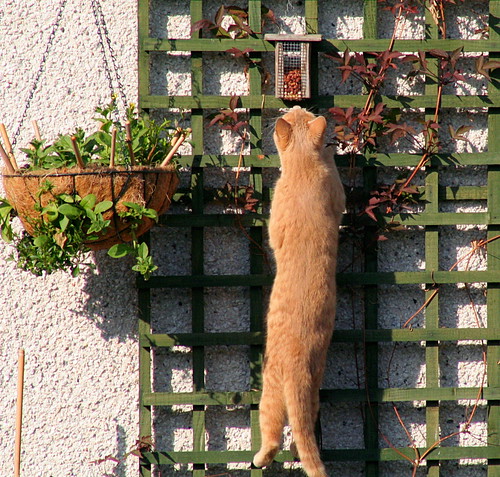Dear all,
It has been
lovely being back in the ISHCMC community this week following the Christmas
vacation and recruitment and witnessing all the exciting things that are taking
place with students and their learning.

I feel that I have so many things that I’ve read recently that I want to share with you all, that I don’t know where to start. After much thought I decided that I would share part of an article and a series of posts s about asking questions, something that is fundamental to all our IB programmes. I read about this recently whilst reflecting on my own teaching and also on unit questions for MYP humanities.
My search started with this:
“To
me, a Beautiful Question is something that should feel important, meaningful,
profound—but also potentially answerable.”
A great question tends to evolve. "In
studying innovators," Berger says, "I've found that once they take on
a big question, they often proceed through various 'stages of inquiry' that
gradually lead them toward an answer. They may not always get to the answer
they want, but they do arrive at something." He has labeled these stages
as "speculative inquiry," "contextual inquiry," "constructive
inquiry"—all steps in a process that keeps the questioner moving forward
on the journey.
Berger is also trying out an idea called
"collaborative inquiry," tapping into the ideas of young people
interested in the subject. "I'm used to working alone in my cave as an
author, but this idea is so big and challenging, I just felt like I didn't want
to go on this journey by myself." So on his website
he asks people to submit their own "Beautiful Questions" and invites
them to join him in the investigation. "I'm asking a team of selected
collaborators, not a random 'crowd,' to help me as I put together the answer.
As the book's author, I'll still make all the decisions and do all the
writing—but hopefully the team will unearth some great raw material that I
could never find on my own. I'm very conscious of the fact that I'm asking
people to do something for nothing, so my hope is that I can make it an enjoyable,
enriching experience."
As the questions grow, will the answers change
Berger's thesis? "I started off with the thesis that one had to learn
how to be a better questioner," he says. "But now I'm starting to
think it's about re-learning—because the truth is, we all start out as
questioners.
"The average 5-year-old questions everything.
Yet research shows that many of us begin to question less and less as we get
older. Is it the school system, which tends to prize memorized answers over
creative questions? Is it because we feel social pressure to 'seem smart?' Or
maybe it's a business culture that discourages employees from questioning
entrenched corporate policies and practices? My book will try to answer these
and many, many other questions about questioning. So now maybe you can see why
I'm going to need help."
Which stimulated
me to a further search on edutopia about asking questions to
encourage students to become more curious and think more deeply in my class as
we are investigating a topic and moving towards an enduring understanding. Below
are three short posts that had links to each other. These gave me some ideas to improve my own
teaching skills as well as reinforcing things I was already doing, so I thought
they might be interesting to you as well.
·
Keeping It Simple
“I also learned over the years that asking straightforward, simply-worded questions can be just as effective as those intricate ones. With that in mind, if you are a new teacher or perhaps not so new but know that question-asking is an area where you'd like to grow, start tomorrow with these five:
#1. What do you think?
This
question interrupts us from telling too much. There is a place for direct
instruction where we give students information yet we need to always strive to
balance this with plenty of opportunities for students to make sense of and
apply that new information using their schemata and understanding.
#2. Why do you think that?
After
students share what they think, this follow-up question pushes them to provide
reasoning for their thinking.
#3. How do you know this?
When
this question is asked, students can make connections to their ideas and
thoughts with things they've experienced, read, and have seen.
#4. Can you tell me more?
This
question can inspire students to extend their thinking and share further
evidence for their ideas.
#5. What questions do you still have?
This
allows students to offer up questions they have about the information, ideas or
the evidence.
In
addition to routinely and relentlessly asking your students questions, be sure
to provide time for them to think. What's best here, three seconds, five, or
seven? Depending on their age, the depth of the material, and their comfort
level, this think time will vary. Just push yourself to stay silent and wait
for those hands to go up.
Also
be sure to vary your tone so it genuinely sounds like a question and not a
statement. When we say something in a declarative way, it is often with one
tone and flat sounding. On the other hand, there is a lilt in our voice when we
are inquiring and questioning.
To help student feel more comfortable and confident with answering questions and asking ones of their own, you can use this scaffold: Ask a question, pause, and then invite students to "turn and talk" with a neighbor first before sharing out with the whole group. This allows all to have their voices heard and also gives them a chance to practice their responses before sharing in front of the whole class.”
http://www.edutopia.org/blog/five-powerful-questions-teachers-ask-students-rebecca-alber?utm_source=twitter&utm_medium=cpc&utm_campaign=blog-5-questions-students-image
Four Strategies to Spark Curiosity via
Student Questioning
“British
archaeologist Mary Leakey described her own learning as being "compelled
by curiosity." Curiosity is the name we give to the state of having
unanswered questions. And unanswered questions, by their nature, help us
maintain a learning mindset. When we realize that we do not know all there is
to know about something in which we are interested, we thirst. We pursue. We
act as though what we do not know is more important than what we do, as though what
we do not possess is worth the chase to own it. How do we help students
discover this drive?
Strategy
One: Equip Students to Ask Questions
At its
essence, curiosity is asking questions and pursuing answers. The brain does not
like unanswered questions and will shift into seek-and-find mode to uncover and
understand the unknown. Questions ignite curiosity.
We
often ask students if they have any questions, but we rarely teach them how to ask
advantageous questions. Like any skill, asking questions can be taught and
practiced, and with technology enabling an increasing emphasis on self-directed
learning, this skill is more important than ever. As Wendy Puriefoy explains,
"The skill of question formulation -- a thinking ability with universal
relevance -- can make all learning possible."1 Students
should be equipped to be inquisitive explorers, to pursue learning anytime,
anywhere.
Strategy
Two: Provide a Launch Pad
Even
if students have mastered the full range
(1) of question forming, it is difficult to inquire about
topics with which they have no familiarity. When this is the case, giving just
enough information to launch inquiry can help. Limit the information to true
basics, such as a general context and term definitions. Then challenge students
to generate questions that, when answered, uncover additional information. (For
a more creative approach to launching questions, try something similar to Dr. Judy Willis'
inventive use of radishes (2)!2)
Guide and prompt as needed to encourage questions that address deeper concepts,
and connections that will help students construct understanding. If needed,
eliminate duplicity by combining questions. Once the questions are articulated,
let the search begin!
Strategy
Three: Cast a Wide Net
During
the information gathering phase of learning, the brain does its best work in an
active and receptive state. (Neurologically, this is characterized by decreased
frontal lobe activity but increased activity in the temporal, occipital and
parietal lobes, and by increased alpha and theta wave activity, suggesting a
relaxed and receptive mental state.3) Action associated with
this neurological state includes searching and collecting that is both focused
("I know the topic I am pursuing") and open to discovery ("I do
not know where I will find it or what else I may find in the process"). We
can foster this by challenging students to "cast a wide net" as they
gather information, striving for diversity in sources and source types. Not
just a summary from Wikipedia, but also a poem that addresses some aspect of
the topic; not just the labeled diagram, but also an artist's portrayal of the
idea.
Keep
the search active by praising student efforts to discover novelty. A new idea
or perspective raises new questions, and since the brain does not like
unanswered questions, curiosity continues to motivate the search.
Strategy
Four: Avoid Cutting the Search Short
Curiosity
cut off at its peak rarely regains its fervor, so allow ample time for students
to thoroughly pursue answers and novel discoveries related to the topic or
idea.
What
is found -- the answers to the questions -- must eventually be sorted and
related to known ideas or experiences for new knowledge and understanding to
emerge. However, we can spark curiosity by engaging students in questioning and
in pursuing answers. Learning "compelled" by questions is learning
driven by curiosity. “
References
1Puriefoy, W.D. (2011). Foreword in Rothstein,
D. & Santana, L. Make
Just One Change.
Cambridge, MA: Harvard Education Press.
2Washburn, K.D. (2010). The Architecture of Learning: Designing Instruction for the Learning Brain. Pelham, AL: Clerestory Press.
3Carson, S. (2010). Your Creative Brain: Seven Steps to Maximize Imagination, Productivity, and Innovation in Your Life. San Francisco: Jossey-Bass.
2Washburn, K.D. (2010). The Architecture of Learning: Designing Instruction for the Learning Brain. Pelham, AL: Clerestory Press.
3Carson, S. (2010). Your Creative Brain: Seven Steps to Maximize Imagination, Productivity, and Innovation in Your Life. San Francisco: Jossey-Bass.
·
A
Simple, Effective Approach
“Most
of us have been exposed to the questioning strategies researched by Mary Budd
Rowe. She proposed that teachers simply ask a question, such as "What do
you call it when an insect kills itself?" pause for at least three
seconds, and then say a student's name: "Sally." By doing this, all
the students will automatically be thinking about an answer and only after
another child's name is said will they sigh in relief because they were not
chosen.
Creative
teachers accompany this technique with a system to make sure that every child
gets to answer questions in a random fashion. If it is not random, then once
they answer a question, they think they have answered their one question and
are done for the day. I did some online research on questioning and found these questioning and
discussion resources from UMDMJ (1)
useful.
So, if
we are not planning to use total physical response (TPR)
(2) to have all the students answer questions at the same
time, then at least we should be asking a question, pausing for three seconds
and then saying a student's name in order to get the most effect out of
questions. However, if we are satisfied with only some students paying
attention and learning in our classrooms, then we can continue as usual.”
Finally for this week’s
Food for Thought we return to the strategies that we learned at the
Transforming your classroom workshop.
#5: Digital Citizenship- Our Space: Being
a Responsible Digital Citizen (Overview)
- Turning Digital Natives into Digital
Citizens
- Kim's resources from Digital
Citizenship: The Forgotten Fundamental presentation
Amazing Resources:


No comments:
Post a Comment